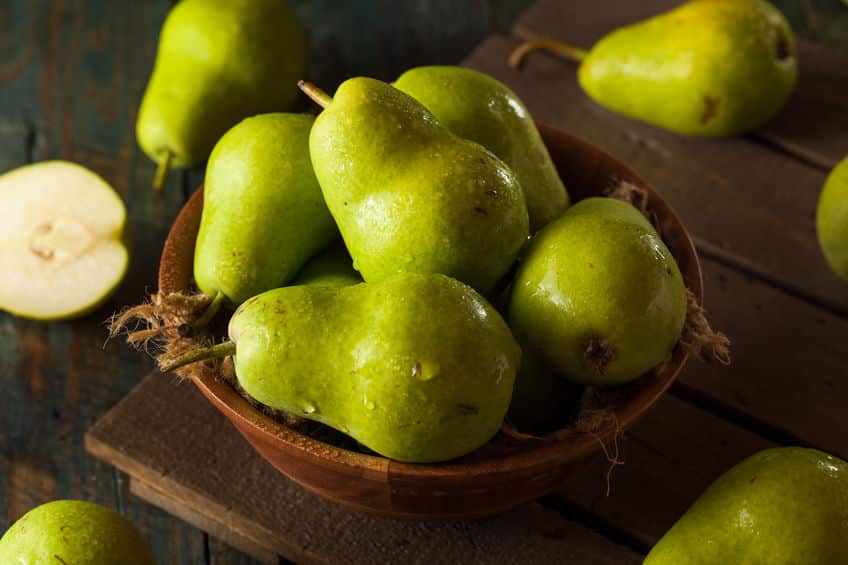By Sean Zucker –
It is, of course, important to eat your fruits and vegetables. They provide necessary vitamins and minerals that are crucial to the human body’s function. However, one fruit that may seem underrated is the pear. That’s unfortunate because it packs a whole lot more than just vitamins and minerals.
Pears are full stop nutritional marvels. One medium-sized pear contains 6 grams of fiber, roughly a fourth of the total recommended daily intake (RDI), which helps to normalize bowel movements, lower cholesterol and control blood sugar. Additionally, that same averaged sized pear provides 7 milligrams of Vitamin C, about one tenth the RDI. This is a boon for the growth, development and repair of all body tissues, while also maintaining proper functioning of the body’s immune system. The simple pear even grams packs a gram of protein in for good measure, all while having barely 100 calories.
Healthline notes pears feature varying beneficial plant compounds that give them distinctive hues, which each offering unique boosts. Pears with a ruby-red hue are generally composed of anthocyanins that can improve heart health and strengthen blood vessels. Green skinned pears feature lutein and zeaxanthin, compounds necessary to keep vision sharp as you age.
The site also unscored the fruits place as an excellent weight loss tool. Given its low calories number, high water level and boatload of fiber, eating a pear will make a person feel fuller faster and for longer. Healthline also highlights the fruit’s anti-inflammatory properties that can decrease a person’s risk of diseases, such as heart disease and Type 2 diabetes.
A recent North Dakota State University study supports this claim, suggesting that pears may be the perfect addition to a healthy diet for those seeking to manage diabetes. The researchers piggy backed off similar research indicating that the peel, pulp and juice of pears could impact the prevention and management of Type 2 diabetes, hypertension and the bacteria Helicobacter pylori, which plays a role in the development of intestinal ulcers. They specifically looked at Bartlett and Starkrimson pears. “Our results from in vitro assays suggest that if we consume Bartlett and Starkrimson pears as a whole fruit, peel and pulp, it may potentially provide better control of early stage diabetes as part of an overall healthier diet,” said Kalidas Shetty, a lead researcher on the project.
“Such dietary strategy involving fruits, including pears, not only potentially could help better control blood glucose levels, but also reduce over dependence on drugs for prediabetes stages, or complement a reduced pharmacological dose of drugs with side effects to combat very early stages of type 2 diabetes,” the study continued.
An American Heart Association study a few years earlier found significant evidence to support both apples and pears ability to fight off strokes. The survey-based study included a 10-year stroke incidence in a population-based study of 20,069 adults, with an average age of 41. The participants were free of cardiovascular diseases at the start of the study and completed a 178-item food frequency questionnaire for the previous year. Ultimately, it found those who regularly consumed pears and apples had a 52 percent lower risk of stroke.
Maybe it’s time to update the old advice and start thinking about having a pear a day to keep the doctor away.













